Five-Minute Science Ideas for Busy Parents to Try at Home With Their Kids
Five-Minute Science Ideas for Busy Parents to Try at Home With Their Kids

Science doesn’t always need a full day or a fancy lab, especially when it includes easy science experiments . With the right ideas, you can transform everyday moments into exciting learning adventures using simple, everyday materials you already have at home.
These five minute science activities fit perfectly into busy schedules, making it easy to teach kids basic concepts in a fun, hands-on way. Whether it’s a classic experiment with baking soda and vinegar or a quick trick with lemon juice and invisible ink, these cool science experiments prove that learning can be fast, simple, and engaging.
In this blog, you’ll discover a mix of easy science experiments for kitchens, backyards, and even small indoor spaces. Each simple experiment takes just a few minutes and creates big “wow” moments for kids. Best of all, these science experiments for kids require minimal setup and cleanup—perfect for parents who want to bring learning home without extra stress.
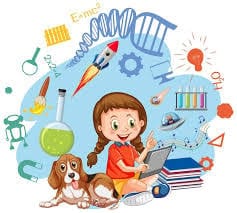
Why Quick Science Experiments at Home Matter for Early Learning
Parents often wonder if a simple trick or a five-minute activity can really help kids learn. The answer is yes! When children explore fun STEM activities like making a rain cloud in a jar or seeing how air pressure moves objects, they’re doing more than just playing. They’re developing curiosity, problem-solving, and a better understanding of the world around them.
Short five minute science activities let children:
Teach kids how to ask questions and make predictions using the scientific method.
Watch chemical reactions happen, like fizzing bubbles of carbon dioxide gas during a fizzy reaction with little baking soda.
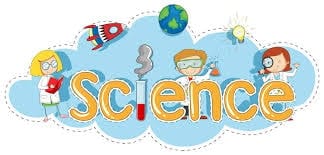
Explore everyday materials like plastic bottles, popsicle sticks, or even different foods to see how things work.
Connect hands on science experiments to real concepts like surface tension, sound waves, or light refraction.
Build confidence through fun STEM activities without long prep time.
When kids see different liquids mixing colors or watch paper airplanes glide using Bernoulli's principle and experiments demonstrating static electricity , they’re not just having fun—they’re learning important concepts in physics, chemistry, and earth science too.
Safety First – What Parents Need Before Starting
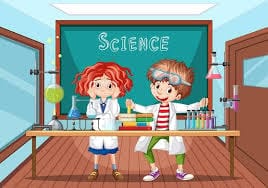
Before diving into cool science experiments, including making a diy compass safety should always come first. Even when a simple experiment uses everyday materials, a few precautions help things go smoothly:
Always supervise: Especially when using a heat source for secret messages or making a solar oven with construction paper and foil.
Use safe items: Stick to non-toxic supplies like lemon juice, dish soap, baking soda, shaving cream, and salt water.
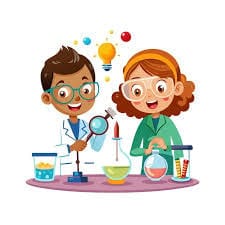
Protect surfaces: Lay down paper towels or use a glass plate to make cleanup easier after each experiment takes place.
Adjust for age: Younger kids can watch the fizzy reaction, while older ones can measure, record, and explain using the scientific method.
Plan ahead: Keep a plastic bag handy for used paper airplanes, film canisters, or messy marshmallow catapult parts.
Safety ensures that each classic experiment stays fun, stress-free, and educational.
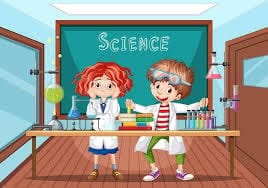
Five-Minute Science Activities Using Kitchen Items
Your kitchen holds everything you need for five minute science activities. From colored water layers to experiments that make biggest bubbles, here are easy science experiments using things you already have.
Vinegar and Baking Soda Volcano
Materials: Vinegar, little baking soda, food coloring, plastic bottle, paper towels.
Steps: Add little baking soda into the bottle, mix in food coloring, pour vinegar, and watch the fizzy reaction release carbon dioxide gas.
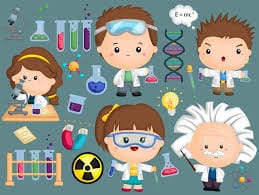
Science: The chemical reactions between acid and base create carbon dioxide bubbles.
Kids learn how everyday materials make classic experiments exciting with just a simple experiment setup.
Lemon Juice Invisible Ink
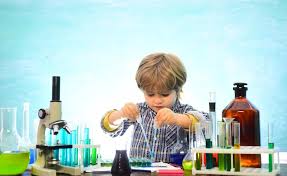
Materials:Lemon juice, cotton swab, white paper, heat source like a lamp.
Steps: Write secret messages using lemon juice, let them dry, then heat gently to reveal words.
Science: The chemical reactions in the invisible ink turn brown with heat, teaching kids about exothermic reactions.
A simple trick that makes teach kids fun while using everyday materials at home!
Floating Egg Experiment
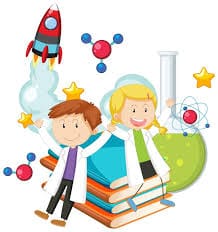
Mix little salt into tap water, drop in an ice cube and egg, and you can also experiment with hydrogen peroxide to see its effects. Kids see how different liquids and salt water change density—an easy way to teach kids about air pressure and buoyancy.
Rainbow in a Glass
Layer colored water with different sugar levels and add food coloring in a glass plate or plastic bottle to create a rainbow effect, or try to make the biggest bubbles . The experiment takes just minutes and introduces different liquids densities using everyday materials.
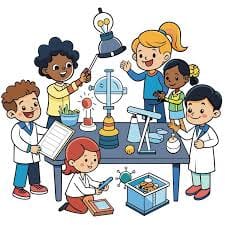
Milk and Dish Soap Color Swirl
Drop food coloring into milk, touch with dish soap, and watch fat molecules move as surface tension breaks. Kids see how chemical reactions affect water's surface in a simple experiment that always amazes.
No-Mess Five-Minute Science Activities for Small Spaces
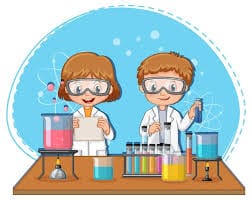
When you want fun without mess, try these easy science experiments that keep things neat while still helping kids learn through hands on science experiments.
Static Electricity Balloon Dance
This classic experiment is a big hit because it takes just a few minutes and uses everyday materials like balloons and paper. All you need to do is rub a balloon on your hair or a wool sweater to create static electricity. Once the balloon is charged, hold it over small paper pieces or even paper airplanes you’ve cut out. Watch as they jump, dance, or even stick to the balloon—kids love the surprise! This simple experiment teaches kids about the invisible forces around us in a way that feels like magic.
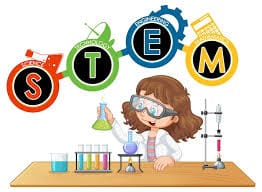
It’s a fun STEM activity that also introduces the concept of air pressure and how charges attract and repel. If you want to make it extra exciting, turn it into a game: Who can make the paper pieces dance the highest? You can also try it with different materials like tissue paper, foil, or construction paper to see what works best.
The experiment takes only five minutes but offers a better understanding of static electricity, air pressure effects, and scientific method basics while keeping kids entertained and curious about science.
Paper Bridge Strength Test
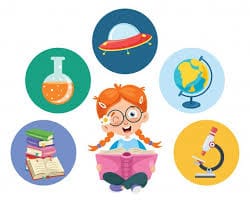
This activity combines creativity, engineering, and science experiments for kids into one fun STEM challenge. Using construction paper, popsicle sticks, or cardboard, ask kids to design a bridge that can hold weight—like coins, small toys, or even a soda bottle filled with little water. The goal? To explore how various shapes and folding techniques affect strength.
For example, folding the paper into an accordion shape or adding popsicle stick reinforcements makes the bridge sturdier. Kids learn about balance, tension, and the science behind real bridges. This simple experiment also teaches the scientific method: make a prediction, test it, and improve the design. Encourage kids to compare different bridge styles and record how much weight each can handle. It’s a hands-on science experiment that teaches engineering basics, introduces them to concepts like air pressure and forces, and keeps them engaged as they test, fail, and improve their designs. Plus, using everyday materials makes it affordable, easy to set up, and perfect for both classrooms and home learning.

Cup Tower Challenge
The cup tower challenge turns plastic cups, rubber bands, and string into tools for a team-based STEM adventure. Kids work together to stack cups into the tallest or most creative tower possible—without directly touching them! Instead, they use a rubber band stretched out with strings to grip and move each cup. This simple trick encourages teamwork, problem-solving, and creative thinking while reinforcing science and engineering concepts.
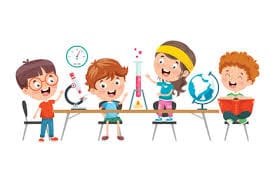
For older kids, you can add extra challenges, like building on uneven surfaces or timing the activity to see who finishes first. It’s one of those fun STEM activities that can be set up in minutes and keeps kids laughing while learning about balance, gravity, and air pressure.
If you want to sneak in more science, ask them why certain tower shapes are sturdier or how the center of gravity affects the design. It’s an easy science experiment with big learning outcomes—plus, cleanup is a breeze since you’re only using plastic cups and rubber bands, items you likely already have at home.
Shadow Shapes

Grab sidewalk chalk, a flashlight or other heat source, and a sunny day to explore the fascinating world of shadows. Start by tracing the outlines of toys, hands, or everyday materials on the ground at different times of the day. Kids will notice that shadows change size and direction depending on the sun’s position or where the flashlight shines.
This simple experiment introduces concepts like light refraction, angles, the water cycle and the Earth’s rotation in a way that feels like playtime rather than a science lesson. For extra fun, use construction paper to cut out shapes or characters and create a shadow story on the wall. It’s a hands-on science experiment that sparks creativity while teaching scientific observation skills. Kids learn to make predictions—like what will happen when the light moves closer or farther away—and then test them out. The activity takes little setup, uses inexpensive materials, and gives kids a better understanding of how light and shadows work in everyday life.
Color Mixing
This activity brings art and science together for a fun, hands-on science experiment. Using clear cups, fill each with water and add a few drops of different food coloring shades. Place a folded paper towel so one end sits in the colored water and the other end in an empty cup. Over time, kids will watch as the colors travel up the paper towels and mix in the empty cups, creating new colors.
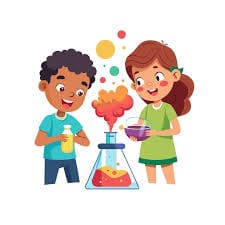
This simple experiment teaches kids about capillary action, absorption, and how different liquids interact. For a cool twist, try layering colored water in a glass plate or testing what happens when you mix warm water and cold water with food coloring.
Kids can make predictions about which colors will blend fastest or how the water’s surface tension changes when dish soap or salt water is added. It’s a quick, low-mess way to combine science, art, and fun STEM activities while teaching the scientific method in action.
Outdoor Five-Minute Science Activities Fun for Busy Evenings
Take five minute science activities outside for fresh air learning.
Leaf Chromatography
Leaf chromatography is a fun way to explore earth science using everyday materials. To start this classic experiment, collect fresh leaves and tear them into small pieces. Place them in plastic bags with a little rubbing alcohol and crush the leaves to release pigments. Kids will love watching colors separate on coffee filters or paper towels.
This science experiment shows how different pigments like chlorophyll break down, making it one of the most hands-on science experiments for young learners. As the alcohol travels up the filter, it carries the colors along at different speeds, creating beautiful streaks.
Parents can explain how plants use pigments for photosynthesis, turning it into a mini earth science lesson. Encourage kids to test leaves from different plants for a better understanding of nature’s variety. It’s an easy science experiment with a big visual payoff—no lab needed, just curiosity and everyday materials. With just a piece of filter paper, this classic experiment blends art and science, sparking creativity while teaching kids real biology.
Water Refraction
Water refraction turns a simple science experiment into a magic trick using light refraction. Draw an arrow on paper with a permanent marker and place it behind a plastic bottle filled with cold water or warm water. As light bends through the water, the arrow appears to flip direction—a simple trick kids love! This happens because different liquids change the path of light, demonstrating real physics concepts. To extend this easy science experiment, try using a glass plate with colored water or even everyday materials like jars to compare results.
Encourage kids to predict what will happen before testing, introducing the scientific method in a playful way. It’s perfect for busy parents since the experiment takes less than five minutes but leaves a big impression. Whether at home or school, this activity helps kids learn how light refraction works in nature, like rainbows or lenses. It’s one of those cool science experiments that feels like magic yet teaches real science—ideal for sparking curiosity about physics using everyday materials already in your kitchen.
Floating and Sinking Hunt
The floating and sinking hunt combines fun with physics, helping kids learn about density and air pressure. Fill two containers: one with tap water and one with salt water. Drop in different foods, sticks, or rocks to see what floats and sinks. Adding little salt changes the water’s density, making heavy objects float—a simple experiment with instant results! To add a twist, try different liquids like oil or soda in plastic bottles for comparison.
Kids can use the scientific method to guess outcomes, record results on construction paper, and compare which objects behave differently. It’s a classic experiment that gives a better understanding of buoyancy and air pressure, plus it’s one of the easiest hands-on science experiments using everyday materials.
Parents can extend the lesson by explaining how boats float or why some fruits sink. Because the experiment takes just minutes, it’s perfect for busy schedules while teaching real science concepts. Over time, this easy science experiment can evolve into discussions about oceans, salinity, and even environmental science—proving that learning can be fun, quick, and incredibly engaging for curious minds.
Shadow Tracing
Shadow tracing is a creative way to teach kids about the water cycle and sun movement while sparking artistic fun. Using sidewalk chalk, trace the outline of an object’s shadow at different times of the day. Kids will notice how the shadow’s various shapes change as the sun moves—a perfect earth science connection. For a better understanding, encourage them to record the time with each outline on construction paper or create a mini-sundial.
Add everyday materials like sticks or toys to make it more engaging. Parents can explain how the sun’s position affects seasons, temperature, and even plant growth, tying science to real life. This easy science experiment doesn’t need fancy tools—just curiosity, chalk, and sunshine!
It’s one of those fun STEM activities where art meets science, making it ideal for kids who love drawing. Plus, since the experiment takes little time at each interval, families can fit it into busy days while learning together. By the end, children gain a visual map of time and motion, making this classic experiment both memorable and educational in the simplest way possible.
Rock Cycle Exploration
Rock cycle exploration transforms earth science into a sensory adventure for kids. Using construction paper charts, classify rocks by human body senses: rough vs. smooth (touch), shiny vs. dull (sight), even sound when tapped together (hearing). Kids can test different foods shaped like rocks—sugar cubes or marshmallows—for a fun STEM activity twist.
This classic experiment shows how igneous, sedimentary, and metamorphic rocks form under heat, pressure, or layering. Use everyday materials like crayons to mimic the cycle: melt them for “igneous,” press shavings for “sedimentary,” and heat-press layers for “metamorphic.” The experiment takes little time yet explains processes that shape our planet.
Parents can add simple experiments with heat sources like warm lamps to simulate Earth’s interior. Kids gain a better understanding of geology while enjoying hands-on science experiments at home. Since it uses everyday materials and construction paper, this activity costs almost nothing but delivers big learning rewards, turning science into a creative, colorful journey through the planet’s rocky history.
How to Keep It Going – Turning Curiosity into Routine
To make fun STEM activities stick:
Dedicate a weekly simple experiment night.
Use film canisters for rocket play or diet coke with plastic bottles for fizzy fun.
Encourage kids learn through scientific method journals.
Try solar oven cooking with marshmallow catapult treats.
Explore human body senses using taste buds tests with different foods.
Conclusion
These five minute science activities, including exploring sound waves, prove that even just a piece of your day can spark curiosity. From fizzy reaction fun with little baking soda to exploring Bernoulli's principle with paper airplanes, each simple experiment helps kids gain a better understanding of science concepts while having fun.
Science learning doesn’t need expensive tools—just everyday materials, a few minutes, and a willingness to explore. Whether it’s chemical reactions, sound waves, or the water cycle, these cool science experiments turn your home into a mini-lab of discovery.
Five-Minute Science Activities – FAQs
Can these easy science experiments really teach kids science?
Yes! Each simple experiment uses everyday materials so kids learn concepts like air pressure, light refraction, and exothermic reactions in minutes.
How often should we try fun STEM activities?
Even once a week works. A quick classic experiment like elephant toothpaste or diet coke geysers builds excitement without pressure.
Are five minute science activities safe for all ages?
Yes, with adult supervision and safe items like lemon juice, shaving cream, popsicle sticks, and plastic bottles for fun STEM activities.
What if we lack materials for a specific science experiment?
Swap items! Use rubber bands, film canisters, or marshmallow catapult toys for other hands on science experiments.
How can we explain the science part simply?
Use analogies: “The fizzy reaction makes carbon dioxide gas like soda bubbles” or “The surface tension acts like a stretchy skin on water's surface.”